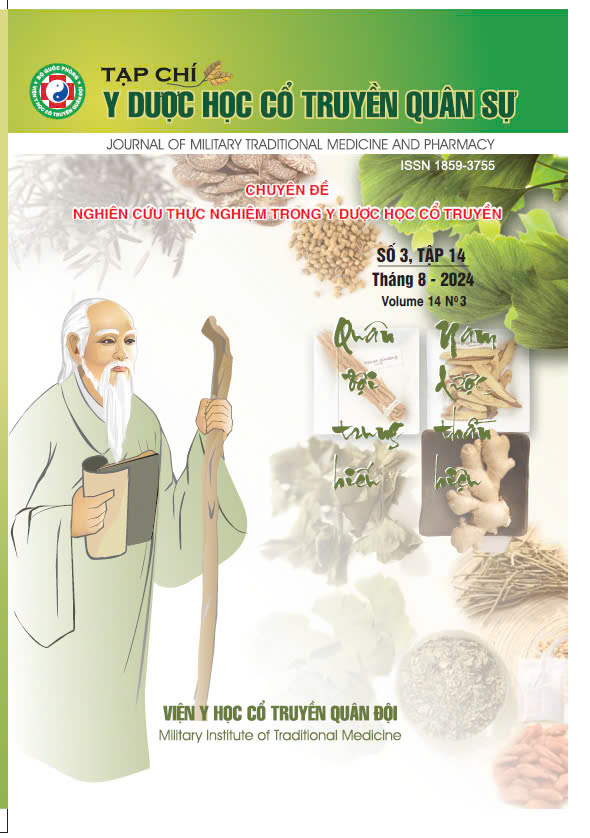NGHIÊN CỨU TÁC DỤNG GIẢM ĐAU CỦA CAO LỎNG CÂY THUỐC THƯỢNG TRÊN ĐỘNG VẬT THỰC NGHIỆM
Main Article Content
Abstract
The research aims to evaluate the analgesic effect of aqueous extract of Phaeanthus vietnamensis Ban on white mice. Materials and Methods: Evaluation of the central analgesic effect by using the pain-induced Hotplate model and the Writhing tests model with acetic acid. Results: The group was used aqueous extract of Phaeanthus vietnamensis Ban had a statistically significant greater time of pain occurrence (p < 0.05) compared to the control group and similar to the reference group (Diclofenac); the number of writhing pain, during 25 minutes after acetic acid injection, in both groups with dose 1 and dose 2 were statistically significantly lower (p < 0.01), equivalent to the reference group (Diclofenac). Conclusions: Aqueous extract from leaves of Phaeanthus vietnamensis Ban at a oral doses of 2,4 g/kg/day and 4,8 g/kg/day has good analgesic effect according to peripheral analgesic mechanism
Article Details
Keywords
Pain relief, Phaeanthus vietnamensis Ban.
References
2. Nguyễn Thượng Dong (2006). Phương pháp nghiên cứu tác dụng của thuốc từ thảo dược, NXB Khoa học kỹ thuật.
3. Võ Văn Chi (2012). Từ điển cây thuốc Việt Nam - tập 2, NXB Y học, Hà Nội, tr.940-941.
4. Koster, R; Anderson, M and Debeer, FJ (1959). Acetic acid for analgetic screening. Fed. Proc, 18, 412.
5. Woolfe G. and Macdonald A. D. (1944). The evaluation of the analgesic action of pethidine hydrochloride (demerol). Journal of Pharmacology and Experimental Therapeutics, 80 (3) 300-307.
6. World Health Organization (2000). General guidelines for methodologies on research and evaluational of traditional medicine.


